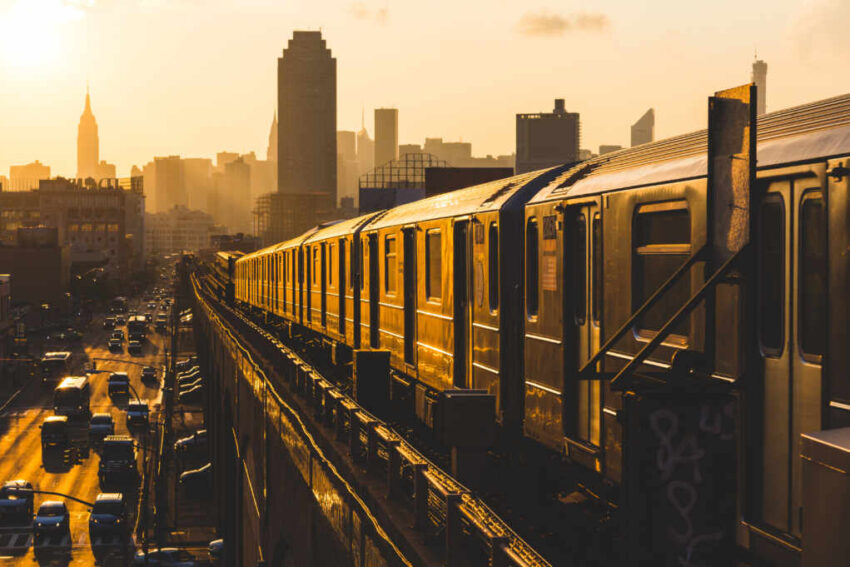AmeriStarRail has proposed a private high-speed rail service between Los Angeles and New York City aiming for a 2026 launch, raising both hopes and skepticism across the country.
At a Glance
- AmeriStarRail plans to run a high-speed rail line linking LA and NYC by May 2026, using existing tracks funded privately.
- The launch is timed with the FIFA World Cup and America’s 250th anniversary, promising coast-to-coast travel in under 72 hours without taxpayer funding.
- Amtrak’s approval is critical, but the company has not yet responded, and past rejections cast doubt on progress.
- Experts warn operational challenges and tight schedules threaten the plan’s feasibility, though success could boost private rail ventures.
A Private-Sector Vision for Cross-Country Rail
AmeriStarRail, a Delaware-based company, aims to revive the idea of a transcontinental passenger rail route called the “Transcontinental Chief,” targeting completion for May 2026. The plan emphasizes use of existing Amtrak and freight rail infrastructure and claims to avoid new government spending or legislation. By aligning the launch with major national events—the FIFA World Cup and the country’s 250th birthday—the project seeks to capture public and investor attention.
Watch a report: AmeriStarRail’s Coast-to-Coast Train Ambition
Despite the promise, Amtrak controls much of the rail network critical to this project. To date, AmeriStarRail’s requests for track access and operational cooperation have not received a public response. Previous similar proposals by the company have also been met with silence or rejection, underscoring the challenge of navigating established rail authorities and regulatory processes.
Rail Industry and Political Dynamics
The project’s success hinges on cooperation from Amtrak and host freight railroads such as BNSF, Norfolk Southern, and New Jersey Transit, who manage essential track segments. These freight operators prioritize their commercial traffic and have no formal obligation to accommodate private passenger trains. The federal government’s role, with President Trump and Secretary of Transportation Sean Duffy involved, could influence regulatory and logistical support, but political and bureaucratic hurdles remain significant.
Communities along the route—such as Chicago, Kansas City, and areas near the Grand Canyon—could benefit economically from increased tourism and jobs. Meanwhile, travelers might gain an alternative to congested highways and airports. However, the entrenched interests controlling rail infrastructure create a complex landscape of competing priorities, with no guarantee of alignment behind the private proposal.
Operational and Logistical Challenges
While leveraging existing infrastructure makes the project more plausible than building entirely new lines, experts highlight persistent difficulties. Coordinating track schedules, securing right-of-way agreements, and managing freight traffic present major obstacles. America’s rail system, aged and primarily freight-oriented, limits achievable speeds and capacity compared to high-speed networks abroad.
Amtrak’s own expansion efforts have faced decades of funding shortages and political gridlock, raising questions about whether a private company can overcome these barriers independently. Achieving the goal of under 72 hours for coast-to-coast travel depends on resolving these complex issues quickly, a challenge given the compressed timeline.
If AmeriStarRail succeeds, it could set a precedent for private investment in U.S. passenger rail and help modernize long-distance travel options. Failure, however, would likely reinforce perceptions of systemic inertia within the American rail industry, delaying progress on alternatives to car and air travel.
The stakes remain high as the country approaches landmark events in 2026, spotlighting the tension between ambition, infrastructure realities, and political will.
Click this link for the original source of this article.
Author: Editor
This content is courtesy of, and owned and copyrighted by, https://deepstatetribunal.com and its author. This content is made available by use of the public RSS feed offered by the host site and is used for educational purposes only. If you are the author or represent the host site and would like this content removed now and in the future, please contact USSANews.com using the email address in the Contact page found in the website menu.








